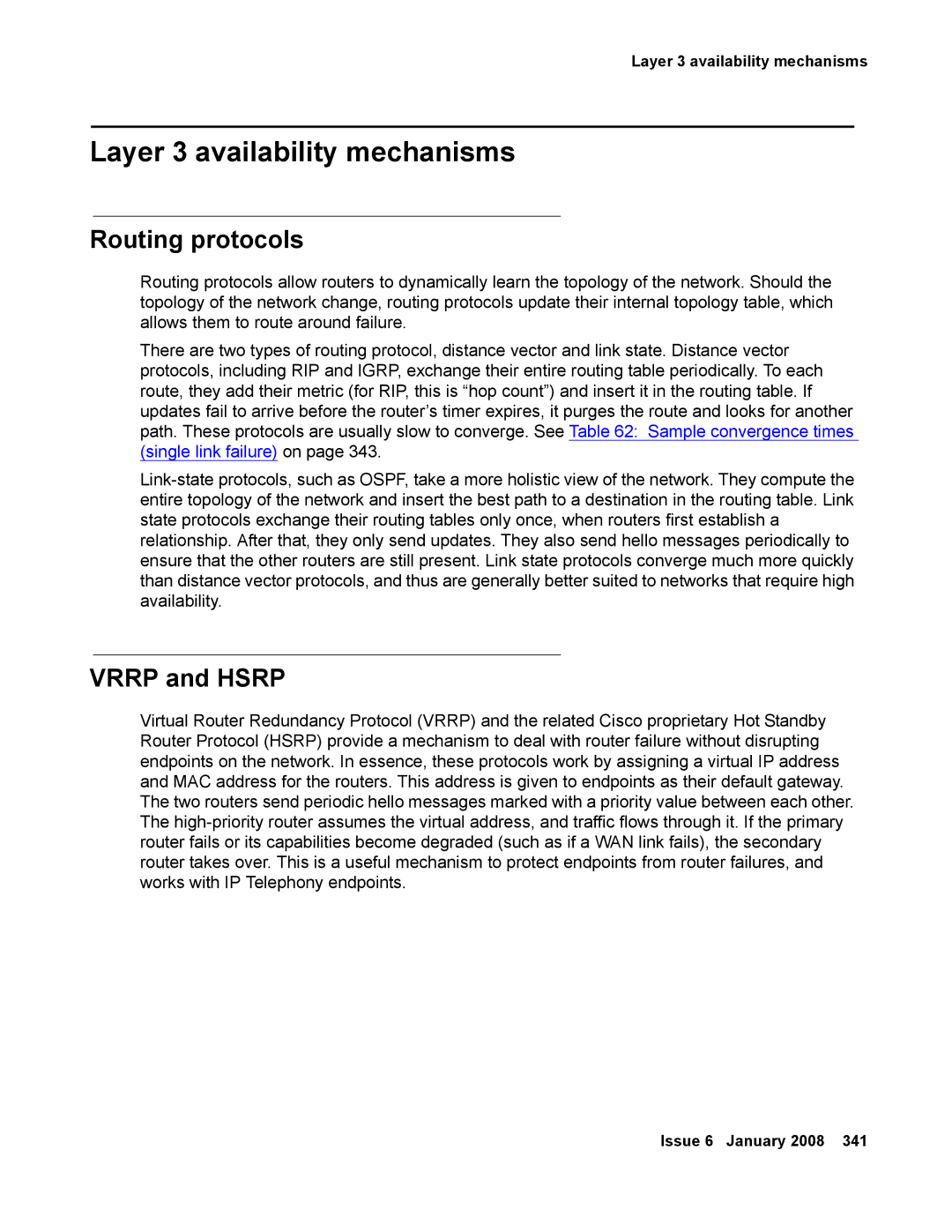
Layer 3 availability mechanisms
Layer 3 availability mechanisms
Routing protocols
Routing protocols allow routers to dynamically learn the topology of the network. Should the topology of the network change, routing protocols update their internal topology table, which allows them to route around failure.
There are two types of routing protocol, distance vector and link state. Distance vector protocols, including RIP and IGRP, exchange their entire routing table periodically. To each route, they add their metric (for RIP, this is “hop count”) and insert it in the routing table. If updates fail to arrive before the router’s timer expires, it purges the route and looks for another path. These protocols are usually slow to converge. See Table 62: Sample convergence times (single link failure) on page 343.
VRRP and HSRP
Virtual Router Redundancy Protocol (VRRP) and the related Cisco proprietary Hot Standby Router Protocol (HSRP) provide a mechanism to deal with router failure without disrupting endpoints on the network. In essence, these protocols work by assigning a virtual IP address and MAC address for the routers. This address is given to endpoints as their default gateway. The two routers send periodic hello messages marked with a priority value between each other. The
